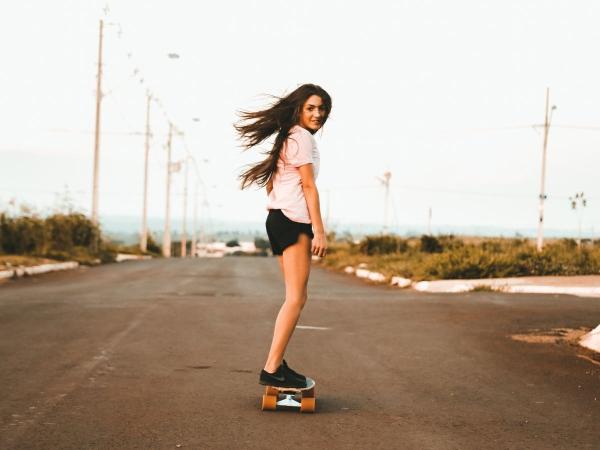How summer 2021 changed the world of skateboarding
Style, rides, tips and tricks – skateboarding is fast, fun and a true example of sustainable, active travel.
More than 50,000 people participate in skateboarding in the UK and because riders require just a skateboard and a patch of flat ground it can be practised anywhere – a perfect fit during the restrictions of covid.
So, who is taking to their board?
Perhaps surprisingly it is not your typical young-male skateboarder who is causing today’s surge in skateboarding. More females than ever are now taking up the sport, couples are now stepping on their boards and the older generation (perhaps they skated in their younger years) are now getting back into the sport – often making it a family adventure and bringing their children along for the ride.

Much like cycling, which has also seen huge growth in popularity since covid struck, equipment has been continually selling out across the country.
Its popularity was further boosted when skateboarding was included in the 2020 Tokyo Olympic Games (its debut as an Olympic sport)– but not everyone agreed with this decision.
Originally created in California in the 1950s as part of the blossoming surf culture of the West Coast, skateboarding has traditionally been conceived as a symbol of rebellion, danger and rule-breaking. Whether justified or not, many skateboarders enjoy being a part of a culture that falls outside of convention, which is why there was a mixed reaction to its inclusion in the Games.
So, why was it included?
The International Olympic Committee is always looking for ways to keep the Games relevant and appealing to all generations, so they look to sports popular among the young to ensure they are catered for. This led to the underground sport of skateboarding being included in the Games for the first time in 2020 (2021 due to the pandemic).
The technicality and skill involved make it a perfect spectator sport. There were two different competitions: Park and Street. The Park competition takes the form of a standard skatepark, with a selection of ramps and pipes.
The Street set-up resembles a mock-up urban setting with steps, rails and ramps for competitors to show off their tricks and skills.
What happened in Tokyo?
Well, the Games certainly achieved their aim. The top three in the women’s Park competition were 19, 12 and 13 years-old respectively. Britain’s Sky Brown took the Bronze, becoming Britain’s youngest ever medallist. At the age of just 13, Japan's Momiji Nishiya also made history by winning the first-ever Olympic gold medal in women's street skateboarding.
In fact, teens dominated the women’s Street event as well. The reaction to the events was very positive, with skateboarding seeing a huge increase as a result of the coverage.

So, what will the legacy of the Games likely be?
Some may find the new positive image of skateboarding goes against the historic “underground” persona of the sport, but in fact this new dawn is helping us embrace skateboarding as a low-carbon, low-cost transport option as well as allowing us to win more medals on the world stage.

What does that mean for active travel campaigners?
For those working in the world of active travel campaigning, it’s important to look at all modes of active travel - not just walking and cycling. There are really good opportunities to attract a wider audience if the scope is widened to include skateboarding especially as a means of getting places. Try including skateboarding activities, reaching out to skating groups to get involved and featuring in your active travel promotional materials.
#skateboarding #activetravel
We hope you have enjoyed this article. If you need resources to support active travel campaigns please get in touch - it’s our speciality here at Brightwayz. As a social enterprise, all profits from sales are ploughed back to support our aims of promoting safe, active, sustainable everyday travel for all.